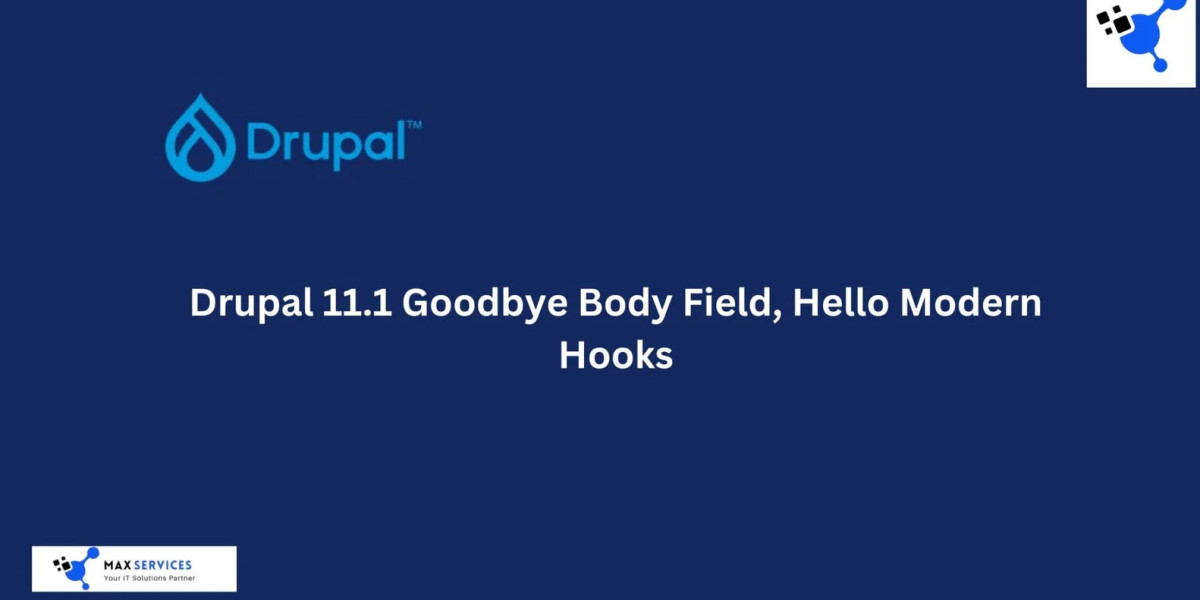The Default Body Field is Gone
For years, Drupal's default body field has been a staple of content types, automatically generated when a new content type was created. Developers and site builders relied on this feature for structuring content efficiently. However, with Drupal 11.1, this convention is being retired.
New content types will no longer come with a predefined body field. Instead, developers will have the flexibility to create custom fields such as field_description, field_text, or field_content, allowing for a more tailored approach to content structuring.
Why the Change?
This shift aligns with the broader trend toward modular content management. Many developers have already moved away from relying on a single body field, opting instead for structured content approaches like the Paragraphs module. Paragraphs enable the creation of reusable components such as text blocks, images, and call-to-action sections, facilitating more dynamic and consistent page designs.
By eliminating the default body field, Drupal 11.1 encourages a more flexible and structured approach to content modeling, empowering developers to build sites that better match their specific needs.
A Modernized Hook System
Another major improvement in Drupal 11.1 is the modernization of its powerful hook system. Hooks allow developers to modify and extend Drupal’s core functionality without altering core files—a key feature that makes Drupal highly customizable.
PHP Attributes for Hooks
The new update introduces support for PHP attributes in defining object hooks, aligning Drupal with contemporary PHP development practices. Previously, hooks followed a strict naming convention, such as hook_form_alter(), which, while effective, could become cumbersome in larger projects.
With PHP attributes, developers can now annotate functions directly, resulting in cleaner, more maintainable code. This improvement enhances readability, reduces complexity, and makes it easier for developers—especially those new to Drupal—to understand and contribute to the codebase.
Practical Benefits of These Updates
The changes in Drupal 11.1 bring several advantages:
Greater Flexibility – By removing the default body field, Drupal empowers developers to create content structures that fit their exact needs, avoiding unnecessary constraints.
Enhanced Modularity – Encouraging the use of modular components like Paragraphs ensures consistency across a site and simplifies content updates.
Modern Development Practices – The adoption of PHP attributes in the hook system reflects Drupal’s dedication to staying current with industry standards, making development more intuitive and efficient.
Improved Collaboration – The cleaner and more readable hook system simplifies onboarding for new developers, reducing confusion and improving teamwork.
Challenges and Considerations
Despite the many benefits, these updates also present challenges:
Learning Curve – Developers accustomed to the default body field and older hook implementations may need time to adjust to the new methods.
Migration Efforts – Existing sites heavily dependent on the default body field will require updates to conform to the new standards.
Documentation & Tooling – Adequate resources and tools will be crucial in helping developers transition smoothly.
Conclusion
Drupal 11.1 marks a significant step forward, embracing modularity and modern PHP development practices. By eliminating the default body field and refining the hook system, Drupal continues to evolve as a cutting-edge content management platform.
While the transition may require some adaptation, the long-term benefits are clear: more efficient workflows, improved flexibility, and a more future-proof Drupal ecosystem. As developers explore these updates, they will discover new opportunities to create powerful, adaptable, and user-friendly websites.








